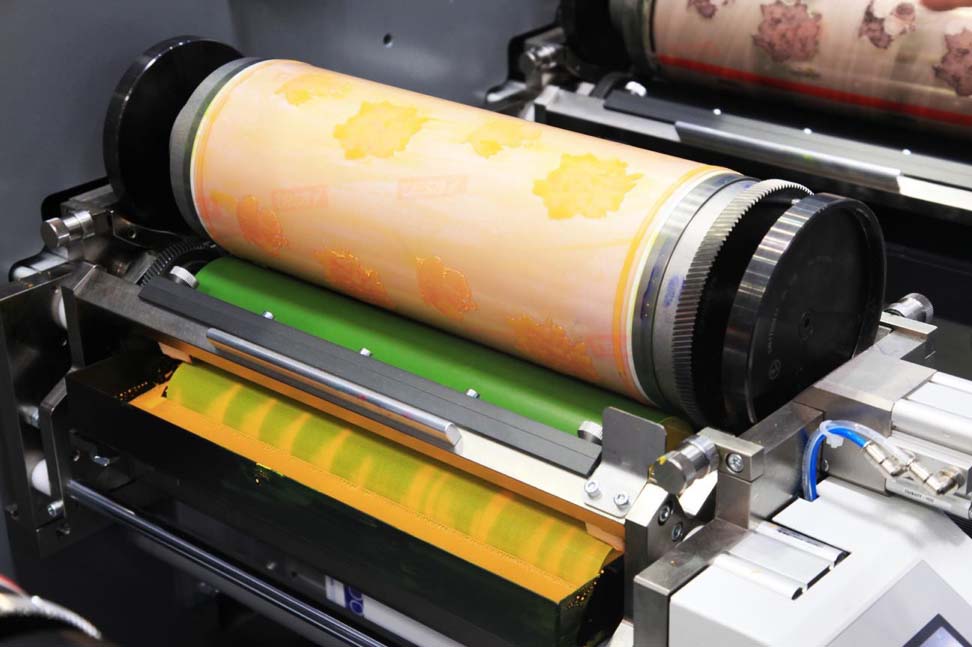In the dynamic world of printing, the technique of flexo on aluminum foil has emerged as a remarkable innovation. This method combines the flexibility of flexographic printing with the unique properties of aluminum foil, creating endless possibilities for packaging and marketing professionals. As we delve into this subject, we’ll explore its significance, applications, and the technological advancements that make it a preferred choice in the industry.

The Basics of Flexographic Printing
Before we focus on aluminum foil, it’s essential to understand what flexographic printing is. Flexography, often referred to as flexo, is a modern version of letterpress. It uses flexible relief plates to print on various substrates, including paper, plastic, and metal. This method is known for its high-speed production and cost-effectiveness, making it suitable for large-scale operations. For more details on the flexo printing process, you can explore comprehensive resources available online.
Why Choose Aluminum Foil?
Aluminum foil is a versatile material that offers several benefits when used in printing. Its reflective surface enhances the vibrancy of colors, and its durability ensures the longevity of printed designs. Furthermore, aluminum foil is a barrier against moisture, light, and oxygen, making it an ideal choice for packaging food and pharmaceuticals. These properties make it an attractive option for marketers looking to create eye-catching and functional packaging.
Applications of Flexo on Aluminum Foil
The application of flexo on aluminum foil spans various industries. In the food sector, it’s used for printing labels, packaging, and wrappers. The pharmaceutical industry benefits from its excellent barrier properties, ensuring that medicines remain safe and effective. Additionally, the cosmetic industry utilizes this technique to produce luxurious and appealing packaging that stands out on retail shelves.
Technological Advancements in Flexo Printing
The printing industry is no stranger to technological innovations, and flexo printing is at the forefront of these advancements. The introduction of digital platemaking, improved ink formulations, and advanced drying systems have transformed flexo printing, making it more efficient and environmentally friendly. You can learn more about the latest flexographic printing machines that are shaping the future of the industry.
Benefits of Flexo on Aluminum Foil
Opting for flexo on aluminum foil offers numerous benefits. The process is quick, allowing for high-volume production without compromising on quality. The use of aluminum foil provides enhanced aesthetic appeal due to its shiny surface, which can make colors pop and designs more noticeable. Additionally, the technique is versatile, enabling the printing of intricate designs with precision.
Challenges and Solutions
Despite its advantages, printing on aluminum foil presents certain challenges. Ensuring ink adhesion can be tricky due to the non-porous nature of the foil. However, advancements in ink formulations and surface treatments have addressed these issues, improving ink adhesion and print quality. It’s also crucial to consider the drying time of inks, which can be optimized using modern ink drying systems.
Sustainability in Flexo Printing
Sustainability is a growing concern in the printing industry. Flexo on aluminum foil is no exception. Efforts are being made to reduce waste and improve the recyclability of printed materials. Innovations in ink formulations and the use of eco-friendly substrates are paving the way for more sustainable practices in flexo printing. You can explore more about the industry’s commitment to sustainability in resources like ESG compliance in flexo printing.
Future Trends in Flexo on Aluminum Foil
The future of flexo on aluminum foil is promising, with trends pointing towards even greater integration of digital technologies. The development of smart packaging, which incorporates QR codes and NFC technology, is set to revolutionize the way products are packaged and marketed. As these technologies evolve, the demand for high-quality flexo printing on aluminum foil is expected to rise, offering exciting opportunities for marketers and packaging professionals.
Choosing the Right Equipment
Investing in the right equipment is crucial for successful flexo printing on aluminum foil. This includes selecting the appropriate printing presses, inks, and drying systems. For those interested in expanding their printing capabilities, understanding the market trends can provide valuable insights into the best equipment choices.
Understanding Ink Formulations
Ink selection plays a vital role in achieving the desired print quality. Inks used for flexo on aluminum foil must provide excellent adhesion, fast drying times, and vibrant colors. Recent advancements in ink technology have resulted in formulations that meet these requirements while also being environmentally friendly.
Improving Print Quality
Print quality is a critical factor in the success of any printing project. Techniques such as optimizing plate design, controlling ink viscosity, and fine-tuning printing parameters can significantly enhance the quality of prints on aluminum foil. These improvements ensure that the final product meets the high standards expected by consumers and clients alike.
Case Studies and Success Stories
Examining case studies and success stories can provide valuable insights into the practical applications of flexo on aluminum foil. Many companies have successfully implemented this technique to enhance their packaging, increase brand visibility, and achieve their marketing goals. Learning from these examples can inspire new ideas and strategies for your projects.
Conclusion
In conclusion, flexo on aluminum foil represents a powerful combination of traditional printing techniques and modern innovation. This method offers numerous advantages, from vibrant prints to sustainable practices, making it an attractive option for various industries. As technology continues to evolve, the potential for flexo on aluminum foil to transform packaging and marketing remains immense.

FAQs
What makes flexo printing suitable for aluminum foil?
Flexo printing is adaptable and efficient, making it ideal for aluminum foil’s smooth and reflective surface. It allows for high-quality prints at high speeds.
How can I improve ink adhesion on aluminum foil?
Improving ink adhesion can be achieved by using specially formulated inks and treating the foil surface before printing. Modern ink technologies are designed to work well with non-porous substrates like aluminum foil.
Are there sustainable options for flexo on aluminum foil?
Yes, there are sustainable options available. These include using eco-friendly inks, recyclable foil, and optimizing production processes to minimize waste.






